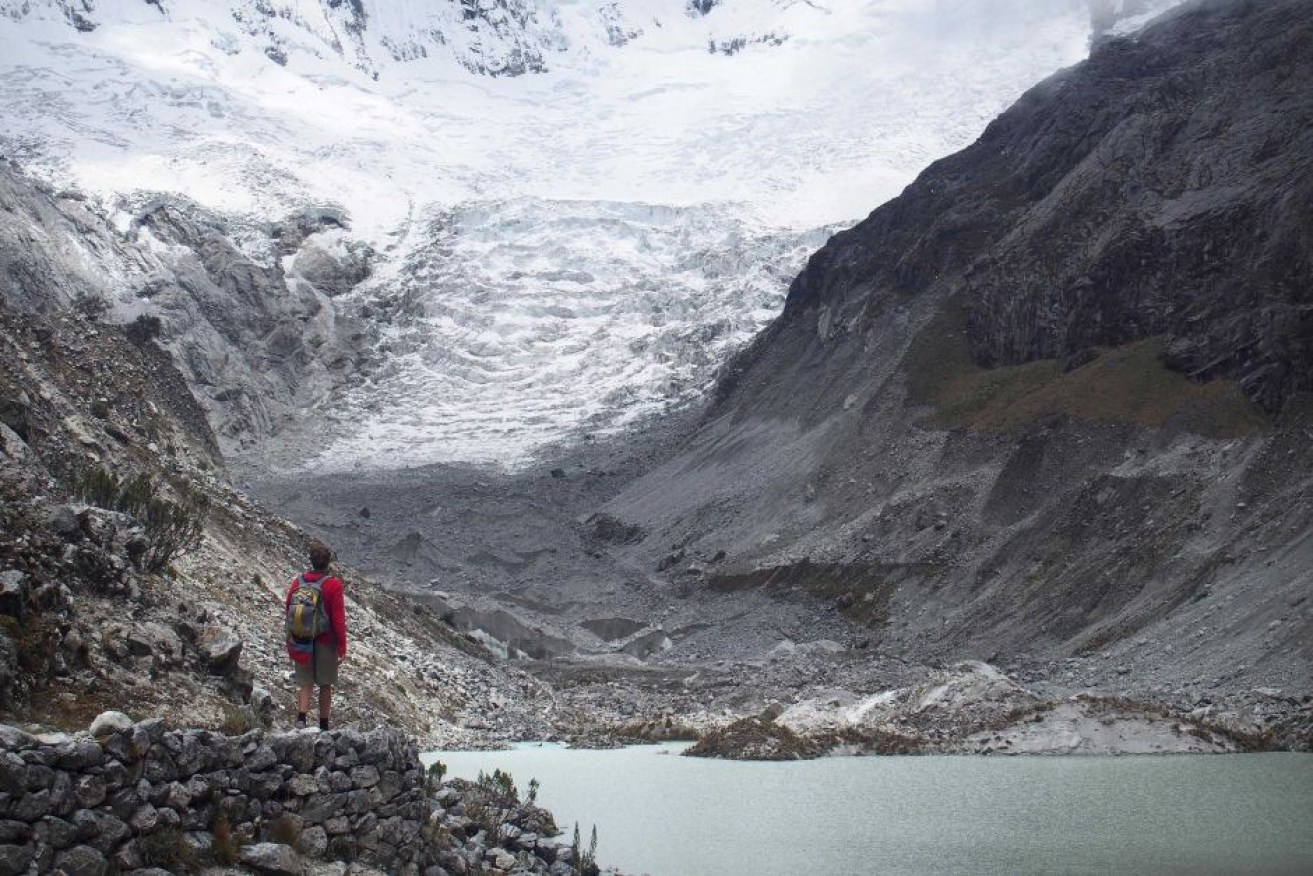Our highest glaciers may disappear in 40 yrs

Krista Eleftheriou
It’s the world’s highest tropical glacial field and scientists predict it will be gone within 40 years.
In the process, it is likely to deliver water shortages and catastrophic floods to towns in the Peruvian Andes.
More than 2500 glaciers slice through the mountain peaks of Peru. Around 660 of them lie in the country’s highest mountain range, the UNESCO listed Cordillera Blanca.
• Geologist goes where no Australian has gone before
• Pluto has blue skies and icy water, say NASA
• Trudeau sworn in with gender-equal cabinet
The United Nations body warns the glacial retreat threatens the livelihoods of 2 million people, living in the valleys below and the desert coastal cities that rely on the glaciers’ water.
“In the last 40 years the glaciers have retreated at least 34 per cent,” Huaraz based Glaciologist and Civil Engineer Cesar Portocarrero said.
“Soon they will be gone.”
Mr Portocarrero has been working with the world’s leading climate change scientists, monitoring the Cordillera Blanca glaciers for four decades, and warned the glacial melt was speeding up.
“Climate change brings two types of problems – water shortages and hanging glaciers,” he said.
“These glaciers slide and produce avalanches into the lakes below and push out the water, carrying debris, sediment and everything down the valley.”
Mr Portocarrero said climate change made glacial avalanches and floods more frequent, increasing the dangers for the provincial capital of Huaraz and its population of 120,000 people.
“Laguna Pallqaqucha [a glacial lake] is currently 34 times its normal volume,” he said.

The remnants of a bus destroyed in the Yungay glacial avalanche in the Cordillera Blancan in 1970. Photo: Krista Eleftheriou
“If it bursts, 18 million cubic metres of water and debris will flood Huaraz.
“There are 10 to 14 dangerous lakes [across the region]. We need early warning systems, starting in Huaraz.”
Despite the city being flooded by the same lake in 1941 and an avalanche destroying the nearby town of Yungay in 1970, monitoring systems are not in place to alert the region’s towns of pending disaster.
“Everything that was here, the houses, the businesses, the town square, roads, the people, everyone died,” said Pedro Roque Solis, the security guard at Yungay’s Campo Santo Cemetery.
Mr Solis was a child living above the valley when the avalanche struck.
His father watched as an earthquake triggered the slide of a huge unstable ice sheet from a hanging glacier on the Huascaran, the country’s highest mountain, sending a slurry of giant boulders, mud and water down the valley.
The colonial town was covered within minutes and 23,000 people were killed.

A man looks at Llaca glacier in the Cordillera Blanca, Peru. Photo: Krista Eleftheriou
Crosses marking where people died in their homes, the twisted metal of a bus and large boulders are reminders of the risks to villages across the region.
While climate change is melting glaciers on the mountain tops, the temperature rises mean in the valleys below, farmers need more water.
“It’s getting hotter and hotter,” Cayasbamba farmer Mateo Milla said.
“Before, I watered every eight to 10 days but now we have to water the plants every three to four days.
“We are all worried because we need water from the glaciers to keep farming.”
While Mr Milla’s side of the valley is green, covered in agriculture and flowing creeks, just a kilometre across the valley on the Cordillera Negra the land is barren and farmers struggle to cultivate crops.
Here there are no glaciers and farmers rely on the limited rainfall to replenish spring water which they can use for only a few hours a day.
“When there is no rain, there is no grass for my animals and they die,” Pueblo Libre goat farmer Gloria Milla said.
Mrs Milla hopes her children will find jobs elsewhere, ending generations of her family living a traditional life in the Cordillera Negra.

The city of Huaraz risks a disastrous flood from a glacial avalanche. Photo: Krista Eleftheriou
“I hope my children will go to school and try to find a better life somewhere else and take me with them,” she said.
Peru’s capital Lima and its population of 10 million people rely on the Andean glacial melt for the coastal city’s water
Lima Water, a group of German scientific advisers helping to develop an action plan to address the capital’s water shortage, said Lima was one of the driest capitals in the world, receiving just nine millimetres of rainfall a year.
More than 1.5 million people in the city are not connected to water and some districts receive only an hour’s supply each day.
“Less water supply coming from the mountains, plus an increasing population, both factors together give quite sever concern about water in Lima in the future,” Dr Manfred Schuetze of Lima Water said.
As a solution to the potential water crisis, the Peruvian government has proposed a series of dams on the Maranon River, the main source of the Amazon, as part of a large hydropower scheme and also the diversion of water to Lima via a tunnel under the Andes.
But because of the Maranon’s importance to the Amazon, the project has drawn strong criticism from environmental groups.
-ABC








